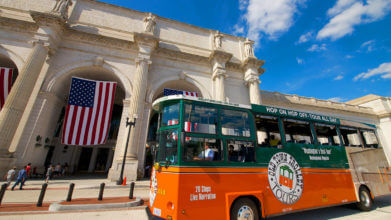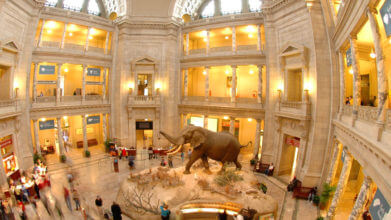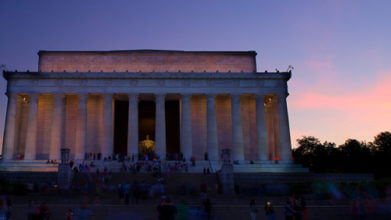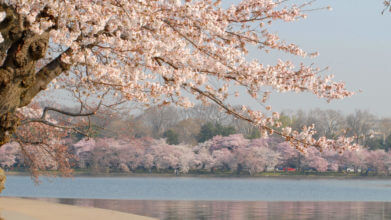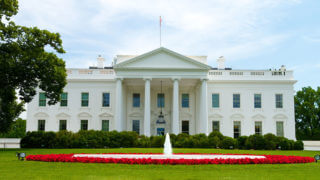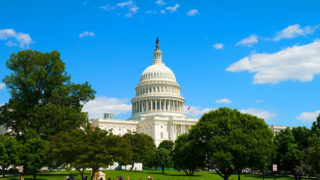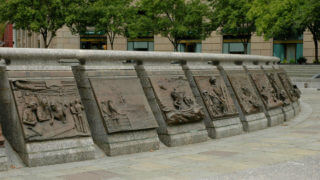The White House
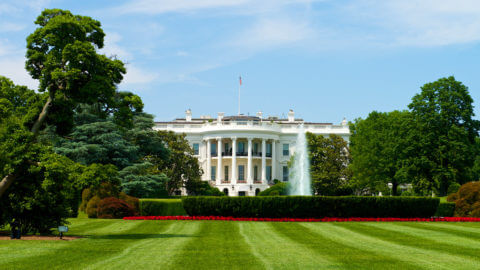
Since 1800, the White House has been a symbol of the United States government, the president and the people of America. It has also served as the home of every U.S. president except George Washington. Remodeled and restored many times over the years, the White House is recognized around the world as an emblem of American democracy. For many, the most famous room in the residence is the Oval Office where the president conducts business and meets with his advisers. Maintaining a stately presence in the nation’s capital, the White House is one of most significant landmarks in Washington, D.C.
The oldest public building within the city, “The People’s House” is located near Old Town Trolley stop #2 and is open for free public tours.
A Brief History of This American Treasure
In 1790, George Washington signed an Act of Congress that created the District of Columbia on the banks of the Potomac River. With the assistance of city planner Pierre L’Enfant, Washington selected the site for the executive mansion. A design from Irish-born architect James Hoban was chosen from a group of nine submissions, which also included an anonymous submission by Thomas Jefferson. After the cornerstone was laid in October 1792, Washington oversaw the construction of the residence. President John Adams and his wife Abigail were the first occupants of the Aquia Creek sandstone, Neoclassical-style building in 1800.
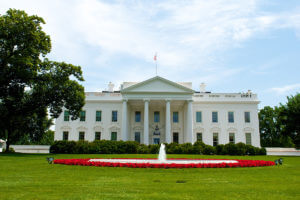
In the main house, the third-floor attic was converted into living quarters in 1927. The addition of the East Wing was completed in 1946. Two years later, it was discovered that the mansion’s wooden support beams and exterior load-bearing walls were close to failure. President Harry Truman oversaw a complete renovation of the White House, including the installation of a new internal steel frame and central air conditioning. First Lady Jacqueline Kennedy oversaw an extensive, historic redecoration of the interior in the early 1960s.
The White House was accredited as a museum in 1988.
The executive mansion has been the setting for numerous state dinners, summit meetings and treaty signings. These include the Camp David Accords in 1978 and the first ever handshake between PLO leader Yasser Arafat and a prime minister of Israel in 1993.
Tips for Visiting the White House
A public tour must be requested through a member of Congress. Foreign visitors should contact their respective embassies in Washington, D.C. Since a limited number of spaces are available, you should submit your request as soon as possible. Requests can be made from 21 days up to six months before your planned visit.
Arrive at the White House Visitor Center at least 15 minutes before your scheduled tour. All guests 18 and older must present a valid government-issued photo ID, such as a driver’s license, a military ID card or a U.S. passport. Foreign nationals must show their passports. You can bring a compact camera for still photographs, an umbrella without a metal tip and medical devices like epinephrine auto-injectors, wheelchairs and electric scooters. Cells phones are allowed, but should be silenced while inside the White House.
While still photos are allowed, flash photography, video recordings, live streaming and texting are prohibited. Other prohibited items include weapons of all types and sizes as well as tablet computers and bags of any kind, including purses, diaper bags and backpacks. Strollers, food, liquids and tobacco products are also on the list of banned items. The nearest public restrooms are in the White House Visitor Center. Parking is limited near the White House so it is recommended that visitors use the Metro or the Old Town Trolley as transportation to and from the landmark.
Nearby Attractions
St. John’s Episcopal Church is a historic Greek Revival-style edifice designed by Benjamin Latrobe. Situated across Lafayette Square from the White House, it features 27 artistic memorial stained glass windows. Nicknamed the “Church of the Presidents,” every chief executive has attended at least one event here since President James Madison.
Also designed by Benjamin Latrobe, the Decatur House was completed in 1819 as a residence for naval hero Commodore Stephen Decatur. Complementing a tour of the executive mansion, it houses the White House Historical Association and is open to the public.
The Renwick Gallery of the Smithsonian is a historic national landmark that houses a collection of American crafts and decorative arts dating from the 19th to the 21st century. It was known as “the American Louvre” when it was completed in 1859.
The Ellipse is directly south of the White House. The 52-acre park is home to various monuments and memorials. It is also the setting for the National Menorah and the National Christmas Tree.
FAQs
What is the White House famous for?
The White House, located in Washington DC, is renowned as the official residence and workplace of the President of the United States. Beyond its political significance, it symbolizes American leadership and democracy, hosting numerous historical events and housing artifacts that reflect the nation’s heritage and culture.
Is the White House tour suitable for kids?
Absolutely, the White House tour is kid-friendly, offering an educational experience that fascinates young minds. It includes age-appropriate information and showcases the operations of the presidency and American history, making it a memorable visit for children.
What can I expect to see during the White House tour?
During the White House tour in Washington DC, visitors can explore several rooms and spaces known for their historical and architectural significance. Expect to marvel at the grandeur of the State Dining Room, the elegance of the East Room, the historical resonance of the Blue Room, Red Room, and Green Room, along with the iconic Oval Office. Additionally, the tour might include views of various artwork, furnishings that have historical importance, and an insight into the working life within this prestigious residence.
10 Fun Facts About the White House
Abigail Adams dried laundry in the East Room because she felt that it was inappropriate to hang the president’s laundry outdoors
British soldiers burned the White House in retaliation for an American attack on Toronto.
When the White House was set on fire during the War of 1812, First Lady Dolly Madison would not evacuate the building until a portrait of George Washington was saved. The painting is the only original furnishing from the White House’s pre-fire era.
Up until Theodore Roosevelt’s Administration, the White House was known as the Executive Mansion
To accommodate Franklin Delano Roosevelt, the White House was renovated to include ramps and elevators to make it wheelchair accessible.
In addition to the 30,000 people who visit each week, the White House receives over 100,000 emails, 65,000 letters, 3,500 phone calls and 1,000 faxes.
Along with a flower shop and dentist office, the White House also has a movie theater, a bowling alley and a swimming pool.
Encompassing 55,000 square feet, the White House contains 132 rooms.
Located in the basement, the Situation Room is where advisers brief the president during a crisis.
At the end of each month, the president and first lady are billed for the meals that they eat as well as toiletries and other personal items they use.

